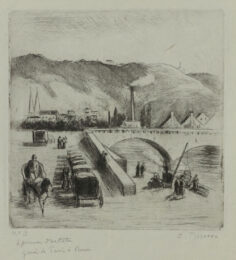

1830-1903
Born in 1830, Camille Pissarro was a Danish-French impressionist painter and later in his life, (at the age of 54) neo-impressionism. He made important contributions to both the impressionism and post-impressionism movements. He did not have any formal qualifications in art. His father would have preferred him to continue working in his job as a cargo clerk but Pissarro took every opportunity, including breaks from work, to practice drawing.
When Pissarro was 21 he was encouraged by another artist, Fritz Melbye, to take on painting as a full time profession. Pissarro and Melbye then moved to Venezuela working as full time artists. In 1855, Pissarro moved back to Paris where he worked as an assistant to another artist, and continued to study other artist’s paintings. He enrolled in various classes but eventually found other teaching methods “stifling”. In 1859 his first paintings were exhibited. These paintings were borne from a love of rural settings.
During exhibits in 1865 and 1866, Pissarro acknowledged influences from Melbye and Corot but during his exhibition in 1868, he no longer accredited other artists as influences and thus stating his independence as his own painter. In the 1870s he became fascinated with Japanese prints and in the 1890s travelled often to London to paint scenes of central London and several parks.
Read the Blog: Camille Pissarro Artworks – From Impressionism to Post-Impressionism.